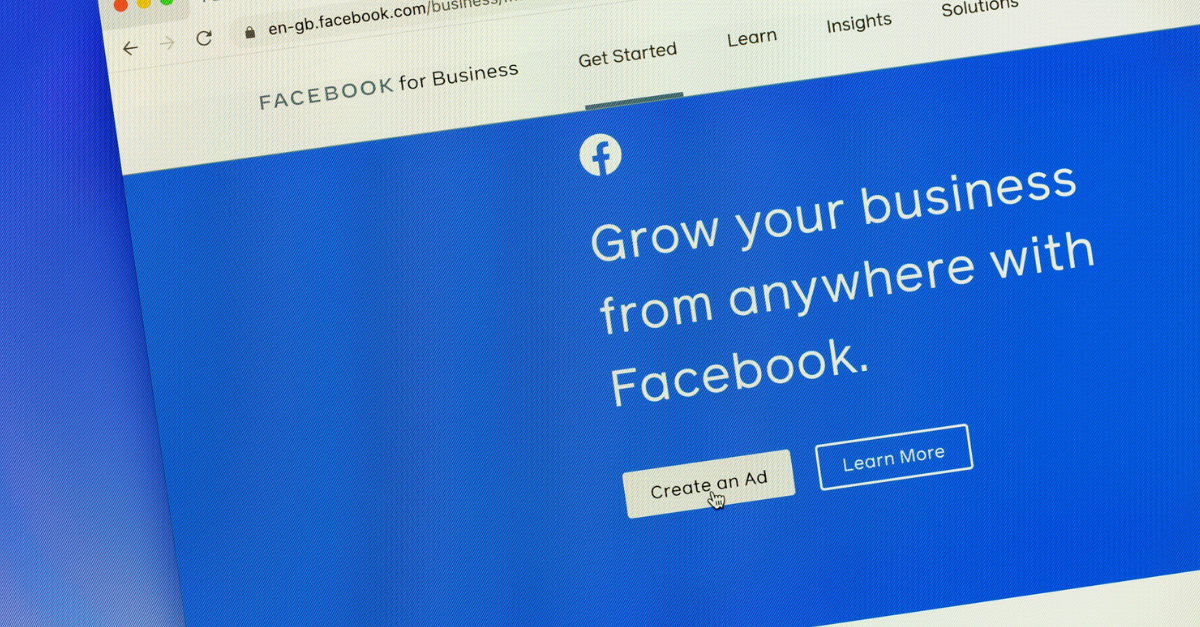Learning the intricacies of Facebook is not something you can master overnight, especially when there are so many factors involved in making a post great in the eyes of your users, and a different set of factors that make it great in the eyes of Facebook’s algorithm.
Luckily, the objective is similar with both, and that’s engagement. Getting a feel for engaging content while figuring out the tips and tricks of Facebook from its tools to its algorithms may be a bit of a learning curve, but it is crucial to building out a powerful marketing strategy.
Understanding the Facebook Algorithm
Is it just me or is the Facebook algorithm out to get only the well-intentioned marketers? Based on my extensive help center wormholes, I’m not the only one who has had these thoughts. The Facebook Algorithm is a well-kept secret that many of us are only able to scrape the surface of.
In the online world, the algorithms decide what’s relevant and what’s not, which is why it’s our job as marketers to do our best when it comes to deciphering its intent and goals. While we’ll never get a clear look into the exact method for willing our desires into reality, we have grasped general tendencies that the Facebook Algorithm seems to stick with.
Why Are My Facebook Posts Not Being Seen?
This is the question on every marketer’s mind. The first step towards remedying this problem is to understand how Facebook works. There are several algorithms at play, probably more than we could imagine. But it’s safe to say that a Facebook Profile and a Facebook Page are priorities for the platform to manage.
A Facebook Profile regulates the Feed and what shows up on the Feed is determined by what the individual user interacts with. Someone that is always liking and commenting on your posts will continue to see the content you publish. Someone that has never taken any action on your content will rarely see your posts, unless there’s tons of interaction by close friends of theirs. This is why we’re always the first to see the status updates of our best friends and only really see the status updates of an old high school classmate when they have announced an engagement that 50 of our other Facebook friends have already commented, liked, and squealed over.
A Facebook Page works differently. Posts through a Facebook Page can show up organically as long as the content is great, and it creates engagement. This is where the idea of viral content comes from. If something gets 100k likes within the hour and is shared by thousands of people, Facebook will take note and prioritize it as valuable content.
In a perfect world, we would be able to produce a post and have Facebook fall in love immediately and share it across the internet. In a marketing world, we must leverage organic and paid visibility to give our content the best shot with our audiences.
Organic Visibility
Facebook uses specific indicators to determine whether our organic content is worth sharing. This is content that we are not paying Facebook to promote, which means there are higher chances of it being “hidden” if it is not up to par.
Priority is given to content that relates to topics people are already spending time on, content from various sources, and content of different formats. This keeps the Feed interesting for those that are scrolling.
Engaging Content
One of your main focuses should be to create content that people are interested in. You are looking for interaction and while there are many ways to go about it, there is a custom strategy for you to discover.
For example, you could position yourself as a source of knowledge, the go-to spot for people who are trying to learn about your specific industry, whether it’s about investments, home improvement, design, etc. You could also speak to your audience’s emotional side with touching client stories or even a cute puppy following you around your company for the workday. The goal is to create something that is irresistible to enjoy and share.
Variety of Sources
Cross-promoting content and guest blogging are two ways to create an advantage. Facebook tries to promote content from a variety of sources so that the Feed does not look like one long scroll of content from the exact same user.
Offering to write content for other websites that you can share gives you another outlet for exposure on the Feed. In addition, make the most out of all the other social media platforms you manage like Instagram, Twitter, LinkedIn, etc. Diversifying your content across different channels is another way to grab the attention of the user.
Different Content Formats
We all have our preferences for content. Some prefer videos and pictures while others will only read text. Keeping this in mind, try to produce a different variety of content—not just to break up the look of your feed but to capture different audiences, as well.
In most cases, if a user is eager about reacting to pictures, Facebook will populate more pictures on their Feed than someone who prefers a plain text post. Ways to add variety include shorter captions with pictures as the focus, GIFs, a video, or a text post that contains a link.
Something to be conscious of is that you don’t have to stick with producing one kind of content just because it has done well in the past. We are not suggesting you limit yourself to just photos or just videos. Also, remember to include captions when you can. Many of us watch videos with the sound off, so having words displayed on the screen not only makes your content more accessible but also more convenient.
Paid Visibility
Is creating a Facebook Ad an artform these days? We like to think it is to some extent. When it comes to paid visibility, you’ve got to write it right, embellish it right, and time it right. However, it doesn’t take a marketing god or goddess to bring all these elements together into the perfect ad, just a well-informed marketer. Here is what to understand before you start your creative process:
- Know your business—understand your goals behind running the ad. Are you trying to garner more signups to your next webinar, promote a product, or find more subscribers? Keep that thought as the backbone of the process.
- Know your audience—even the largest, most well-funded companies aren’t going to spend time shooting into the void. Understanding who is on the receiving end is half the game. You can’t create ads if you don’t know who you’re creating them for. Check out our blog post for more guidance on determining your target audience.
- Know your budget—as much as we all wish, we aren’t made of money. Ads need to have a lifespan that falls within what you’re able to afford. Whether it’s an ad that’s always showing or one that’s being promoted during specific events, keep your cost ceiling in mind.
- Know your content—this is the fun part, right? Find your voice and stick to it, so much so that your audience feels connected to your brand and can pick you out blindfolded.
Effective Utilization of Facebook Ads
There are several components that make up a Facebook Ad and being familiar with them will make your creative process much more efficient.
Ad Creative: The image and text that your brilliant team comes up with. When it comes to text, keep it simple. Sometimes we find that we can get the most across with the least number of words—succinct headlines and a powerful, story-telling image can take you far.
Targeting: The audience that you’ve put time and effort into researching and finding. Facebook Ads comes equipped with Audience Optimization, an organic tool with three helpful features (preferred audience, audience restrictions, audience insights). Learn more about Audience Optimization on Meta’s blog here.
Placement: This one is easy. Placement refers to the spot your ad appears on a user’s Feed.
Bid, Budget, Schedule: These all play a role in how much you are spending and how long your ad will show up. Bid refers to the cost to acquire your customer’s click. Budget is the amount of money in the bank you are willing to allocate to the ad campaign. Schedule is how long your ad will run for.
Your work is not done the second your ad is released, although a nice pat on the back is more than deserved. Once your ad is out doing its thing, it is time for you and your marketing team to make the most of it. This involves evaluating your ad’s performance and results and regrouping for the next campaign.
When evaluating how well your ad is doing/did, you want to look at key data points such as clicks, CTR, impressions, reach, CPC, conversions, etc. Understanding what these basic terms mean can provide plenty of insight into your campaign. For example, 10,000 impressions are vastly different from 10,000 clicks.
Now that we’ve covered the need-to-know, how do you take that information and make the most out of your Facebook Ad campaigns? For one, we recommend becoming familiar with the free ad management tool that Facebook offers—Facebook Ads Manager. This is an all-in-one tool that combines the quick creation capabilities of their well-loved Power Editor with the original Ads Manager’s guided creation. You will be able to create, manage, and see results for all your campaigns through this portal.
Another tool we suggest using is the Facebook Pixel. This is a piece of code that Facebook allows you to tack on websites, landing pages, or Facebook Ads that gives you a way to measure and optimize your campaigns. This looks at the interactions your audience is taking and, in turn, shows you how effective your advertising is, allowing you to create remarketing audiences, build Lookalike audiences, reach new customers, and improve your ROI.
The Takeaway
Does it feel like there is way too much to learn and not enough time to learn it when it comes to Facebook? We completely understand. There’s a reason why this giant has dominated the social media space for over a decade.
The best way to tackle the Facebook marketing landscape is to start simple and incorporate tidbits of knowledge into your strategy as you go. Focus on creating great content for the right audience and then play around with trendy tactics, ad spending, and nifty tools like the Facebook Pixel. See you in the Metaverse!
Need some help? Learn about emfluence’s approach to social media strategy and marketing services or get started with your next campaign by contacting us at expert@emfluence.com!



